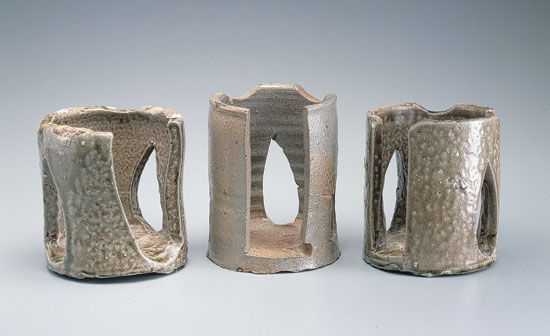Figure 60 Saggars, William Rogers, Yorktown, Virginia, 1720–1745. H. 5", 5 1/2", and 5". (Courtesy, National Park Service, Colonial National Historical Park, Yorktown Collection.) COLO Y 15928, COLO Y 38766, COLO Y 15934. A variety of saggars were employed at the Rogers’s pottery to protect the stoneware mugs during firing. Made of refractory clay, the Yorktown saggars have four openings cut into the walls, permitting the entrance of heated air and volatilized salt. Three of the openings are teardrop-shaped; the fourth is a wide rectangular slit cut through the rim to facilitate air movement and subsequent removal of the glazed mug. Most saggars are heavily coated with salt glaze because of repeated use. Saggars range in diameter and height from 4–10", although there seem to have been three main sizes (corresponding to the different size stoneware mugs). The largest saggars are 9–10" in height and weigh about 8–10 pounds each. Saggars were stacked in columns in the kiln’s pot chamber. The kiln’s topmost saggar was topped by a lid. Individual saggars and stoneware pots were separated from one another—to prevent sticking during salt glazing—by props, pads, and wads of refractory clay generally referred to as kiln furniture. Thousands of saggar fragments and pieces of kiln furniture were found throughout the site.
|

